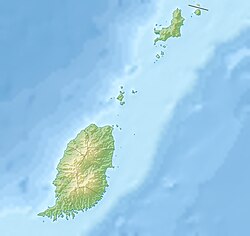| Grand Bay Formation | |
|---|---|
| Stratigraphic range: Middle Miocene | |
| Type | Formation |
| Lithology | |
| Primary | Tuff |
| Other | Sandstone |
| Location | |
| Coordinates | 12°24′N61°24′W / 12.4°N 61.4°W |
| Approximate paleocoordinates | 12°06′N61°06′W / 12.1°N 61.1°W |
| Region | Carriacou |
| Country | Grenada |
The Grand Bay Formation is a geologic formation in Grenada. It preserves fossils dating back to the Middle Miocene period. [1]
